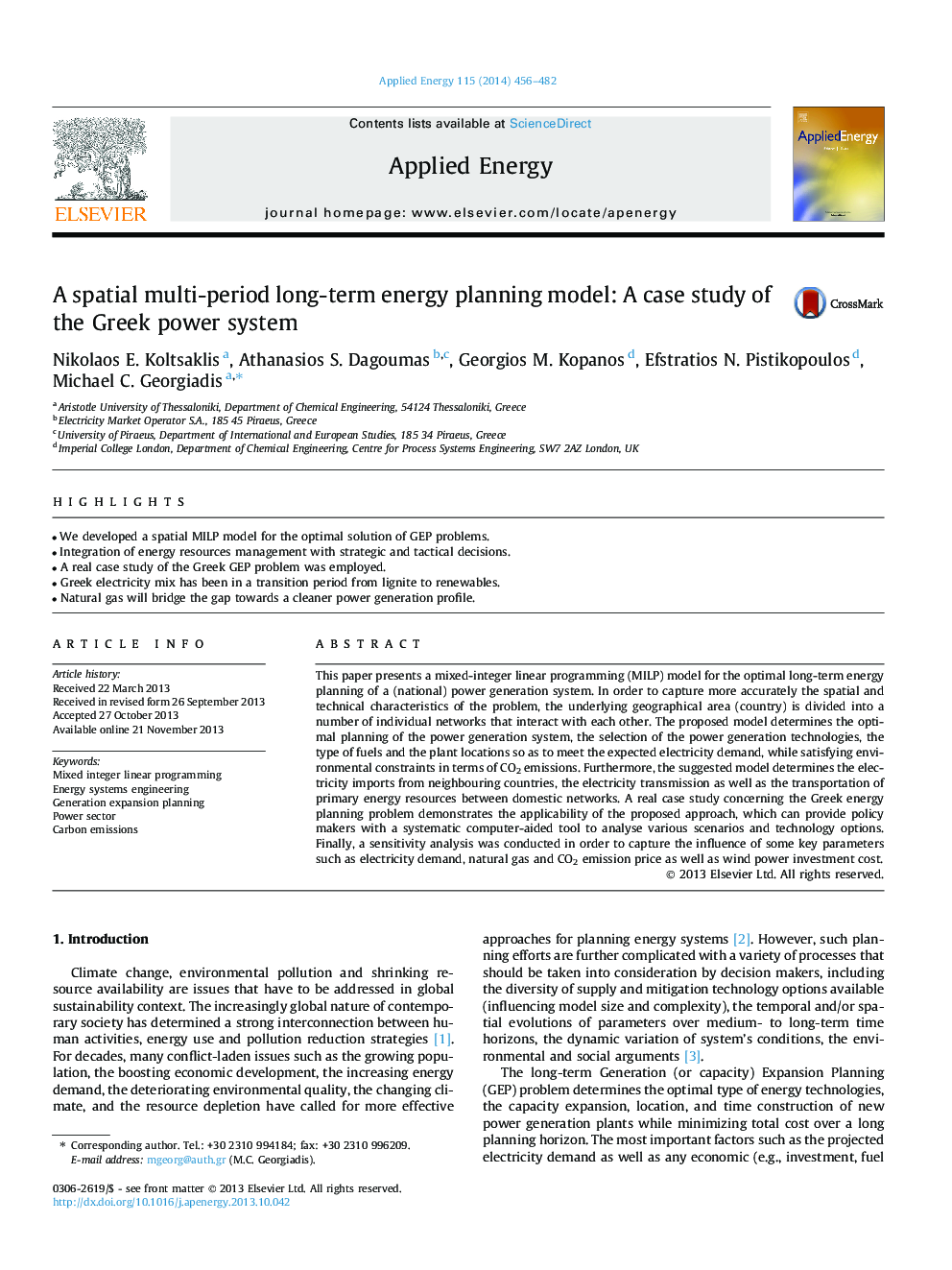| Article ID | Journal | Published Year | Pages | File Type |
|---|---|---|---|---|
| 6691500 | Applied Energy | 2014 | 27 Pages |
Abstract
This paper presents a mixed-integer linear programming (MILP) model for the optimal long-term energy planning of a (national) power generation system. In order to capture more accurately the spatial and technical characteristics of the problem, the underlying geographical area (country) is divided into a number of individual networks that interact with each other. The proposed model determines the optimal planning of the power generation system, the selection of the power generation technologies, the type of fuels and the plant locations so as to meet the expected electricity demand, while satisfying environmental constraints in terms of CO2 emissions. Furthermore, the suggested model determines the electricity imports from neighbouring countries, the electricity transmission as well as the transportation of primary energy resources between domestic networks. A real case study concerning the Greek energy planning problem demonstrates the applicability of the proposed approach, which can provide policy makers with a systematic computer-aided tool to analyse various scenarios and technology options. Finally, a sensitivity analysis was conducted in order to capture the influence of some key parameters such as electricity demand, natural gas and CO2 emission price as well as wind power investment cost.
Keywords
Related Topics
Physical Sciences and Engineering
Energy
Energy Engineering and Power Technology
Authors
Nikolaos E. Koltsaklis, Athanasios S. Dagoumas, Georgios M. Kopanos, Efstratios N. Pistikopoulos, Michael C. Georgiadis,
